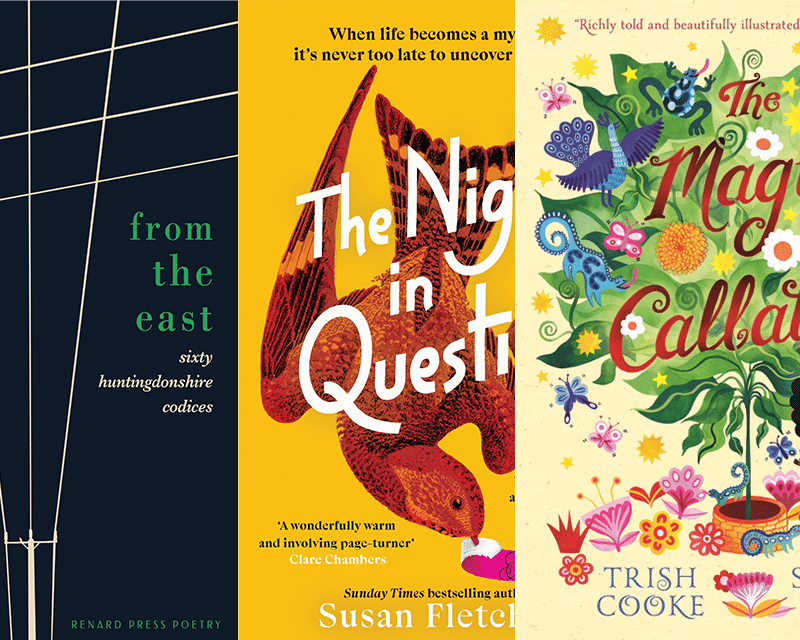- Collected
- Article
Death and Texas
A journey into Patricia Highsmith

- 2 November, 2015
- Jill Dawson
Suicide, sexual obsession, stalking, delusion, deceit, madness and murder: this is the world I’ve been immersed in for the last few years. I’m writing a novel about Patricia Highsmith.
Earlier this year, a rough draft completed, I was still groping in the dark. There was something missing. What could a novelist add about the prolific writer when two exhaustive biographies of her exist, as well as a memoir by a former lover, countless anecdotes by those who knew her and Highsmith’s own copious output — 22 novels, hundreds of stories, a guide to writing, a children’s book, diaries, notebooks and letters?
Highsmith was born Mary Patricia Plangman in Fort Worth, Texas in 1921. That she’s a Texan seems to surprise people. When I mention going there to research her I’m met with ‘Oh I thought she was a New Yorker’¬ – the family did move there when she was six – or even ‘I didn’t know she was American, I thought she was Swiss.’ She would have been pleased, I think, to have been mistaken for a European, as she often expressed feelings of disgust towards her fellow Americans. She travelled – Venice, Paris, England, Morocco, and Switzerland – all of her adult life, never staying in one place long. Her later years were spent in Switzerland and she died there in 1995.
Why did I go to Fort Worth if she was only there for a few years and spoke witheringly of its importance in her life? Highsmith only set one novel (Strangers on a Train) and a handful of short stories in Texas, but those years in the Lone Star state had an indelible impact on her.
Her mother, Mary, divorced her father nine days before her birth. Her relationship with her mother was where the torture began. Mary Highsmith was a thwarted and critical woman, a talented commercial artist with the poisonous habit of expressing her envy of her daughter by telling her what was wrong with her at every opportunity.
The ‘little hell’ of her childhood – Highsmith’s description – was completed by the arrival of a stepfather she hated, Stanley Highsmith, when Patricia was three. The fantasies of murder that dominate her novels were, she claimed, provoked by Stanley. After her marriage, Mary repeatedly left Highsmith in the company of her own mother – Willie Mae, Highsmith’s grandmother – breaking promises to return over and over, and then turning up when least expected.
As I step off the plane at Fort Worth, I think of what Willa Cather said: ‘Most of the basic material a writer works with is acquired before the age of fifteen.’ This vast state, where men wear a uniform of Stetsons, Levis and Justin cowboy boots, even in the lobby of my business hotel, embodies things Highsmith held dear: self-reliance and a disregard for goody-goodies and lily-livered cops; admiration for outlaws and those who make their own rules. Her most famous creation, Tom Ripley, does not quite relish committing murder (‘he would not care to analyse or relive the seven or eight murders he had committed’) but does not see why he should be devastated for the rest of his life.
And there is more. Something far more significant, one of those private things that happen to writers in the middle of writing a novel that change forever its atmosphere, composition and tone. My immersion in Highsmith Country coincides with my adoption of a 14-year-old girl. Of course, children are not taken into care without reason and naturally my daughter comes with her own complicated story. Her biggest fear, she says, is that we will want to ‘get rid of her’.
This surprising turn of events in my life is the thing that most flavours the novel, nudging the topic of maternal rejection into my imagination. When I read of the ‘terrible year’ Highsmith endured at the age of 12, when Mary promised to divorce Stanley and return to live in Fort Worth, then changed her mind and dumped Pat there with Willie Mae again while she returned to Stanley, I think of this.
‘Far away on the flat black prairie a locomotive wailed, on and on, and then again, farther away. It was a sound he remembered from childhood, beautiful, pure, lonely’, Highsmith writes in Strangers on a Train. I hear that now, in my hotel bedroom, as the train rattles by with its melancholy moan.
A cab driver is reluctant to take me to Highsmith’s old home. ‘Nothing much there Ma’am. Abandoned.’ That word again. West Daggett Avenue is now desolate, the house replaced by a parking lot. Highsmith’s description of Texan light is ‘colourless, like something grown white with its own heat’. I feel like an insect trapped inside a huge glass bowl.
Some details I know of Highsmith make sense in Texas. She carried a knife, said her old lover, Marijane Meaker. Well, there are a lot of handsome knives here. The Stock Show has a whole stall dedicated to them; I bet most Texans own one. She loved whisky. In one bar I count two dozen different kinds. She’s often photographed in riding gear or her other uniform of Levis 501s in size 34. The cowboy culture and the influence of the horse is everywhere, and ‘brother’ Dan (actually her cousin) was a Rodeo radio star. She dressed as a boy and who wouldn’t? Boys got all the action in Fort Worth in the 1920s.
My hotel looks out over Sundance Square, once the territory of Butch Cassidy and the Sundance Kid, now a place of posh shops and Mexican diners. The rodeo and stock show is in town and I spend an edge-of-my seat hour watching young men bareback on bucking broncs, risking whiplash and worse. Then things get surreal with the ‘Calf Scramble’: high school students from Fort Worth trying to wrestle a calf to the ground for a deadly serious prize — a scholarship.
There’s a twice-a-day longhorn show where cowboys drive the cattle – every shade of sand and cream, like pebbles on a beach – through the stockyards. Good steaks – which feature often in Highsmith novels – are easy to find. The historic stockyard district is surely touristy at the weekends but midweek it has a dodgy, down-at-heel feeling: men drinking alone in bars, a stuttering fan whirring in the Stockyards Hotel, the drifting smells of cattle urine competing with the scents of hickory-smoked burgers. An unwritten scene in my novel, a particularly sad one, which I think I’ve been avoiding, where Highsmith meets her father for only the second time in her life (she’s 17), immediately starts writing itself, conjured by the atmosphere of seedy loneliness. And it’s here too that I catch the strongest whiff of Hitchcock’s film of Strangers on a Train — that creepy moment where Bruno strangles Miriam in the empty fairground, beyond the pleasure lake.
Highsmith wrote of someone who had committed murder as ‘damned, unique and horrible’. The phrase might just as easily describe the feelings of a child who has been rejected by her mother. The adult Highsmith who stars in her own biographies is embittered. In her later years she is alcoholic, anti-Semitic, racist and often downright sadistic. But in those first 15 years the basic material Cather suggested she was developing as her writer’s toolkit is evident: she was an enraged, abandoned daughter. Her murderous fury – the women in her novels are frequently murdered in grisly ways – melts frequently into anguish and a plea.
You get the feeling that so much of her venom is because she likes to strike first, to avoid getting hurt. I hear the plea. I go home and continue writing. I promise I won’t get rid of her.
You might also like:
No facts, only versions
Memoirs are as much about what is excluded as what is included. This edition examines how you can evoke the…
RLF Fellows’ News: April 2024
Publishing News RLF Fellow Trish Cooke’s new children’s book, The Magic Callaloo, is set to be published by Walker Books…
Susan Fletcher on outsiders in fiction – literal and imagined
I’ve always known that I’ve preferred to be outside. To be an outsider – literally, and, specifically, amongst wild places…


